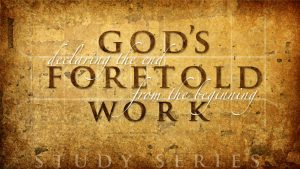[…] That Paul has the same trumpet in view in 1Cor 15:52 is put beyond reasonable question when it is considered that he tells us precisely which time and which resurrection is in view. It is the time of the resurrection of the saints of the Old Testament Isa 25:8; 26:19). It is plainly evident that Paul is deliberately associating the time of the church’s translation with the time of the resurrection of the Old Testament saints. He clearly says that the time of the ‘last trump’ is also the time of the resurrection mentioned in Isa 25:8. This is precisely what Paul is doing when he says, “Then shall be brought to pass the saying which is written …” (1Cor 15:54).
When is “then”? Well, to the chagrin of pre-tribulational teaching, “the saying” is written in Isa 25:8, which is undeniably situated in a post-tribulational context. This is ignored by pre-tribulational teaching. Paul’s statement, “then shall be brought to pass the saying which is written,” is passed over in convenient silence. However, then means then, and Paul’s “then” is manifestly the time of the last trump. […]




